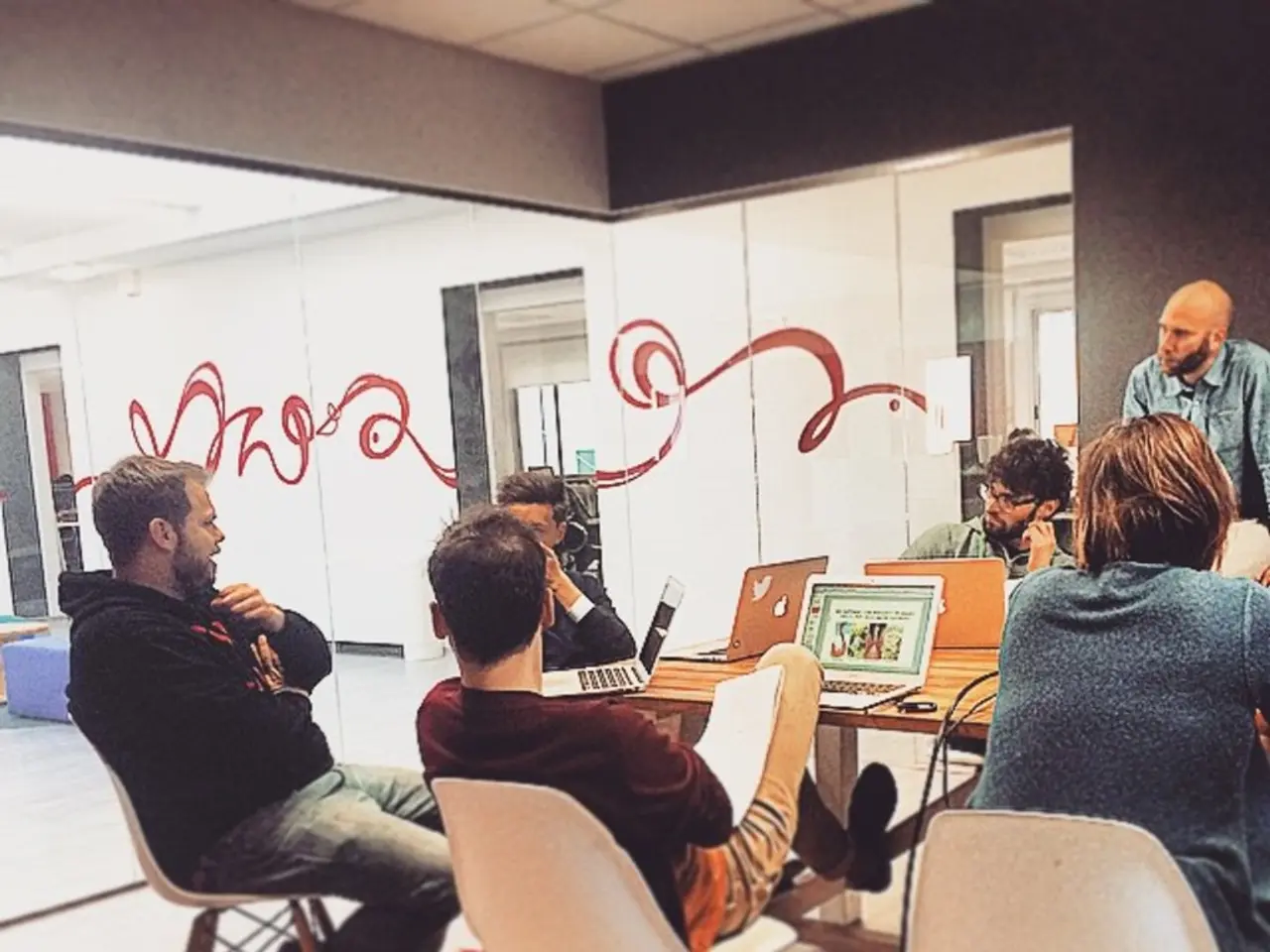In 2025, the Persistent Labor Shortage Compels Firms to Reconsider Their Hiring Strategies
In today's rapidly changing job market, the need for adaptability and continuous learning has never been more crucial. As traditional qualifications struggle to keep pace with technological advancements, companies are turning to innovative strategies to upskill, reskill, and hire based on skills rather than degrees.
One such strategy is the implementation of upskilling and reskilling programs. Organisations across various sectors, including finance, manufacturing, and healthcare, are investing heavily in these initiatives to adapt to automation, AI, and digital transformation. Companies like Amazon, IBM, and Walmart have launched workforce academies to train employees in IT support, data analysis, and cybersecurity. Upskilling focuses on enhancing soft skills, critical thinking, and technical fluency to complement automated processes, while reskilling helps workers transition from declining roles to emerging fields.
Employers are also partnering with educational institutions and online platforms to create accessible training aligned with market needs. This collaboration helps close the skills gap by delivering microcredentials and certifications in high-demand skills like cloud computing, data analytics, and digital marketing. Examples of such partnerships include those with community colleges and digital education providers like Coursera, edX, and LinkedIn Learning.
Skills-based hiring has become the new standard, with many industries adopting a competency-based recruitment approach. This shift moves away from traditional qualification requirements towards a broader talent pool, enabling more flexible workforce entry.
Third-party staffing agencies are also playing a crucial role in filling immediate vacancies in technology, healthcare, manufacturing, and financial services. These solutions alleviate short-term shortages and help manage changing skills demands.
A cultural shift towards continuous learning and career development is essential in addressing the skills gap. Employers are investing in in-house learning platforms, tuition reimbursement, and incentives such as bonuses or promotions linked to skill acquisition.
The green economy and sustainability initiatives are creating new cross-functional roles requiring both technical and environmental knowledge, prompting tailored training efforts. Soft skills such as communication and adaptability remain critical as technology reshapes job functions.
The technology sector faces a significant challenge due to the rapid pace of tech change and a cybersecurity skill shortage. To address this, workforce academies, microcredentialing, partnerships with edtech, and rapid reskilling are being employed.
Healthcare is estimated to face a worker shortage of 15 million by 2030. To tackle this, upskilling clinical and support roles, flexible hiring, and targeted recruitment strategies are being used.
In the manufacturing sector, a predicted 2.1 million openings by 2030 are due to a shortage of skilled trades. To combat this, paid apprenticeships, on-the-job cross-training, and automated skill upgrades are being implemented.
Financial services are integrating AI and demanding digital fluency. To meet these demands, digital upskilling, collaborative training programs, and skills-based hiring are being employed.
In conclusion, the current landscape to tackle the skills gap is multi-faceted, combining employer-driven training initiatives, education sector partnerships, skills-based hiring reforms, and third-party staffing solutions. These efforts are supported by a cultural emphasis on continuous learning and adaptability, ensuring the workforce can meet the demands of evolving industries.
- In the rapidly changing job market, companies are investing in upskilling and reskilling programs to adapt to automation, AI, and digital transformation, focusing on soft skills, critical thinking, and technical fluency.
- Employers are partnering with educational institutions and online platforms to deliver microcredentials and certifications in high-demand skills like cloud computing, data analytics, and digital marketing, closing the skills gap.
- The green economy and sustainability initiatives are prompting tailored training efforts for new cross-functional roles requiring both technical and environmental knowledge.
- Financial services are integrating AI and demanding digital fluency, addressing this by implementing digital upskilling, collaborative training programs, and skills-based hiring.
- Healthcare is estimated to face a worker shortage of 15 million by 2030, tackled through strategies like upskilling clinical and support roles, flexible hiring, and targeted recruitment.




